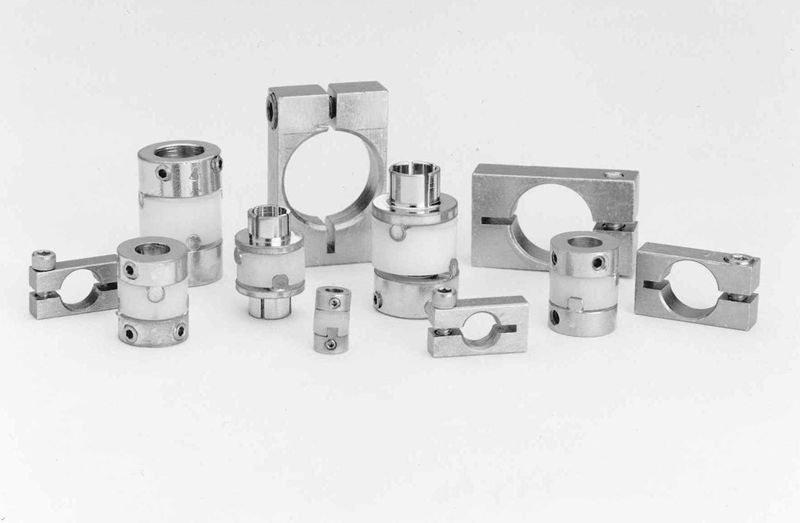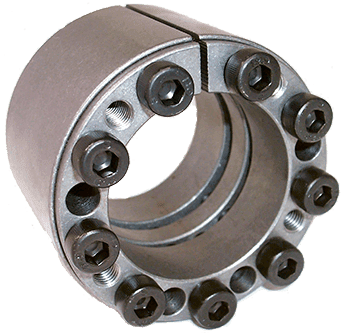
Can I purchase locking collars with specific features suitable for use in conveyor systems?
Yes, you can purchase locking collars with specific features that are suitable for use in conveyor systems. Conveyor systems often require specialized locking collars to ensure secure and reliable shaft attachment, accommodate the unique demands of conveyor applications, and optimize overall system performance. Here are some specific features to consider when purchasing locking collars for conveyor systems:
- Anti-Slip Design:
- High Load Capacity:
- Corrosion Resistance:
- Easy Installation and Adjustment:
- Shaft Protection:
- Alignment and Positioning:
- Industry Standards and Compatibility:
- Manufacturer Support and Expertise:
Look for locking collars that have anti-slip features to prevent unintended movement or slippage of the collar on the conveyor shaft. These features can include serrations, knurls, or specialized surface treatments that enhance the grip between the locking collar and the shaft, providing a secure and reliable connection.
Conveyor systems often handle heavy loads, so it’s important to choose locking collars with a high load capacity. Look for collars that are designed to withstand the specific loads and forces encountered in conveyor applications. Consider factors such as the material strength, geometry, and construction of the locking collar to ensure it can handle the anticipated load requirements.
Depending on the environment in which the conveyor system operates, corrosion resistance may be crucial. Look for locking collars made from materials that offer excellent corrosion resistance, such as stainless steel or corrosion-resistant coatings. This helps to protect the collars from degradation due to exposure to moisture, chemicals, or other corrosive substances.
Consider locking collars that offer ease of installation and adjustment features. Conveyor systems often require frequent maintenance, adjustments, or replacements, so having locking collars that are designed for quick and convenient installation and adjustment can save time and effort. Look for collars with user-friendly designs, such as tool-free locking mechanisms or integrated adjustment features.
Locking collars that provide shaft protection features can help prevent damage or wear to the conveyor shaft. Look for collars that have smooth internal surfaces, chamfered edges, or materials that minimize friction and abrasion on the shaft. This helps to extend the lifespan of both the locking collar and the shaft, reducing maintenance requirements.
In conveyor systems, precise alignment and positioning of components are crucial for smooth operation. Consider locking collars that offer alignment or positioning features, such as set screws, keyways, or specialized designs that facilitate accurate placement of the collar on the shaft. These features can help maintain proper alignment of conveyor components and minimize the risk of misalignment-related issues.
Ensure that the locking collars you purchase comply with relevant industry standards and specifications. This ensures compatibility and interchangeability with other components of the conveyor system. Look for locking collars that meet recognized standards to ensure proper integration and reliable performance.
Consider purchasing locking collars from manufacturers or suppliers who specialize in conveyor systems or mechanical power transmission components. These manufacturers often have in-depth knowledge and expertise in designing locking collars specifically for conveyor applications. They can provide guidance, technical support, and customized solutions to meet your specific requirements.
When purchasing locking collars for conveyor systems, it’s important to consider the specific needs and requirements of your application. Consult with manufacturers, suppliers, or industry experts to ensure that the locking collars you select are suitable for your conveyor system and will deliver optimal performance and reliability.
By considering these specific features and factors, you can purchase locking collars that are tailored to the unique demands of conveyor systems, ultimately enhancing the efficiency, durability, and overall performance of your conveyor application.

Can you provide recommendations for cost-effective locking collars catering to different budget constraints?
Certainly! Here are some recommendations for cost-effective locking collars that cater to different budget constraints:
- Standard Set Screw Locking Collars:
- Two-Piece Clamping Collars:
- Single-Slit Clamp Style Collars:
- Threaded Shaft Collars:
- Split Collars:
- Economy Collars:
Standard set screw locking collars are a popular and cost-effective option. They feature a collar with one or more set screws that tighten against the shaft, providing a secure grip. These collars are widely available and come in various materials such as steel, zinc-plated steel, or stainless steel. Standard set screw locking collars are suitable for many general-purpose applications and offer a good balance between cost and performance.
Two-piece clamping collars consist of two halves that are tightened together using screws or bolts. They provide a strong and reliable clamping force on the shaft. These collars are cost-effective and often made of aluminum or steel. Two-piece clamping collars are suitable for applications where frequent adjustments or repositioning of components are required.
Single-slit clamp style collars are designed with a single radial slit, allowing them to be easily installed and removed. They offer a secure grip on the shaft and come in various materials such as steel or aluminum. Single-slit clamp style collars are cost-effective and well-suited for applications where frequent assembly or disassembly is required.
Threaded shaft collars feature an internal or external thread that allows them to be directly threaded onto a shaft or other components. They provide a firm and adjustable grip. Threaded shaft collars are available in different materials such as steel, stainless steel, or plastic, offering options to suit different budgets. These collars are cost-effective and suitable for applications where fine adjustment or positioning is necessary.
Split collars are designed with a radial cut, allowing them to be easily installed or removed without the need for shaft disassembly. They typically have one or more screws for tightening. Split collars are available in different materials such as steel, stainless steel, or aluminum. They are cost-effective, versatile, and suitable for applications where frequent component changes or adjustments are required.
Economy collars are basic locking collars that offer a cost-effective solution for simple applications. They are typically made of steel or aluminum and may have a set screw or clamping mechanism. Economy collars provide a reliable grip at an affordable price point, making them suitable for budget-conscious projects or applications with lower demands.
When selecting cost-effective locking collars, consider factors such as the required load-bearing capacity, environmental conditions, and the specific needs of your application. It’s important to strike a balance between cost and performance to ensure the locking collars meet the necessary requirements while fitting within your budget constraints.
Remember to consult with reputable suppliers or manufacturers to ensure the quality and reliability of the locking collars you choose, regardless of your budget.

How do locking collars compare to other types of shaft collars, such as set-screw collars or clamp collars?
When comparing locking collars to other types of shaft collars, such as set-screw collars or clamp collars, there are several factors to consider:
- Installation Method:
- Security and Holding Power:
- Shaft Protection:
- Adjustability:
- Application Suitability:
- Complexity and Cost:
Locking collars typically use mechanisms like split designs, threads, ratcheting, or adhesive lining to secure them to the shaft. In contrast, set-screw collars rely on a screw that is tightened against the shaft, while clamp collars utilize a band or clamp that is tightened around the shaft.
Locking collars are often designed to provide high levels of security and holding power. The various mechanisms they employ, such as the split design, threading, or ratcheting, offer a more secure grip on the shaft, minimizing the risk of slippage or loosening under torque or vibration. Set-screw collars and clamp collars, while effective in many applications, may be more prone to slippage or require periodic adjustment to maintain their grip.
Locking collars, particularly those with split designs or adhesive lining, can provide better protection for the shaft. They distribute the clamping force more evenly, reducing the risk of damage or deformation to the shaft. Set-screw collars, if not properly installed or tightened, can potentially create localized stress points or indentations on the shaft surface. Clamp collars, while generally providing good protection, may exert more localized pressure due to their band or clamp design.
Set-screw collars offer some adjustability as the set screw can be loosened and repositioned on the shaft. This allows for fine-tuning or repositioning of the collar. Clamp collars often provide a degree of adjustability as well, as the clamp or band can be loosened and repositioned. Locking collars, depending on their specific design, may offer limited or no adjustability once fully tightened.
The choice between locking collars, set-screw collars, or clamp collars depends on the specific application requirements. Locking collars are often preferred in high-torque or high-vibration applications where secure and reliable shaft connections are crucial. Set-screw collars and clamp collars are commonly used in applications with lower torque or where occasional adjustment or removal is necessary.
Locking collars, with their various mechanisms and designs, can be more complex in construction compared to set-screw collars or clamp collars. This complexity may result in higher manufacturing costs. Set-screw collars and clamp collars, being simpler in design, are often more cost-effective options.
Ultimately, the choice between locking collars, set-screw collars, or clamp collars depends on the specific needs of the application. Consider factors such as torque requirements, vibration levels, ease of installation, adjustability, shaft protection, and budget constraints to determine the most suitable collar type for your particular application.


editor by CX 2023-12-07
